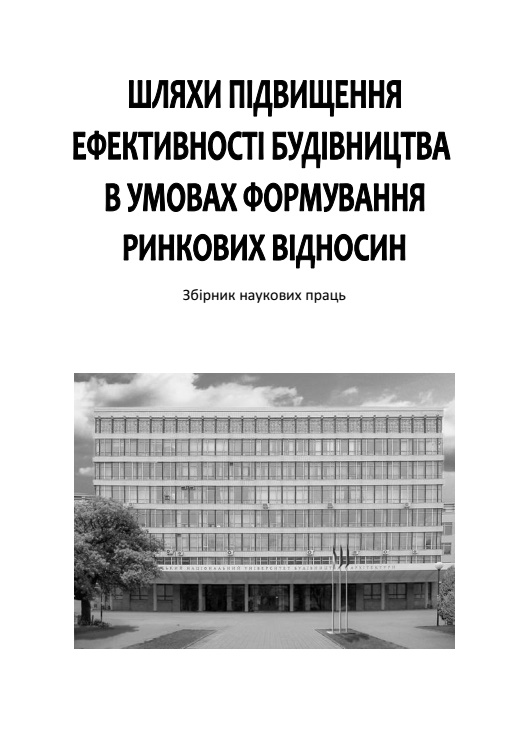Development of a spatial model of a brittle medium for description of processes beyond the limits of a body carrying capacity
DOI:
https://doi.org/10.32347/2707-501x.2022.49(1).49-58Keywords:
modeling, brittle medium, discrete model, rod approximation, mass and spring modelAbstract
Existing body models are based on the condition of solidity of the material of which they are made. However, there are tasks contradicting this condition. For example, simulation of a building collapse, simulation of the process of excavation machines. Such problems require the use of discrete models that do not rely on continuity. An interesting model is the model of elastic bodies in computer games, consisting of elastic joints connected in nodes. In this way, a kind of spatial truss is formed. If we concentrate the masses in the nodes, introducing additional bounding spheres for contact calculation, it becomes possible to simulate the process of structure failure due to destruction of connections in the step-by-step calculation. The disadvantage of this model is the lack of theoretical justification with a focus on visual and resource efficiency.
A similar rod approximation of elastic bodies was proposed back in 1956 by Professor A.R. Rzhanitsyn. In his works, he considered a flat plate, taking into account the importance of the elastic characteristics of the body due to the characteristics of the rods of the structure. His ideas did not find wide development due to the lack of technical capabilities of such calculation. In addition, the finite element method proved to be more effective. Nowadays, technical possibilities are available, while the finite element method, while working effectively on solid bodies, has limited possibilities in the problems of body fracture.
It is possible to improve the quality of the results obtained with the rod approximation by changing to the cluster model in which the whole structure is considered as a set of clusters. For conventional shapes and loads, such an approach makes it possible to reduce the error to zero. However, these studies have been performed only for the planar problem.
Spatial bodies can also be approximated by means of rod clusters. To justify this approach, the operation of a single cluster is considered: the equilibrium of a node and the rods attached to this node. This allows us to determine the dependence of the deformations of the cluster on the stiffness of its rods. By equating the deformations of the cluster and the bulk body, which describes this cluster, the necessary value of rod stiffness, which provides elastic characteristics of a real body, is established.
References
Ромашко В.М. Деформаційно-силова модель опору бетону та залізобетону: Монографія. Рівне: НУВГП, 2016. 424с.
Дорофєєв О.А. Моделі ґрунтового середовища для розрахунків основ фундаментів архітектурних споруд та моделювання процесу земляних робіт при їх спорудженні. Вісник Хмельницького національного університету. Технічні науки. № 3. Хмельницький: ХНУ, 2018. С. 91-95.
ANSYS Mechanical APDL Advanced Analysis Guide. Canonsburg, PA: ANSYS, Inc., 2013. 396 р.
Конгер Д. Физика для разработчиков компьютерных игр. Пер. с англ. А.С. Молявко. М.: БИНОМ. Лаборатория знаний, 2007. 520 с.
David M. Bourg, Bryan Bywalec. Physics for Game Developers, Second Edition. Sebastopol: O’Reilly Media, Inc., 2013. 553 p.
Овчаренко А.А., Овчаренко А.С. Новый подход к моделированию процессов механической обработки почвы. Збірник наукових праць Луганського національного аграрного університету. Серія: Технічні науки. Луганськ: ЛНАУ, 2011. С. 155-165.
Ржаницын А.Р. Представление сплошного изотропного упругого тела в виде шарнирно-стержневой системы. Исследования по вопросам строительной механики и теории пластичности / Под. ред. А. Р. Ржаницына. М.: Стройиздат, 1956. С. 84-96.
Ржаницын А.Р. Строительная механика: Учеб. пособие для вузов. М.: Высш. школа, 1982. 400 с.
Овчаренко О. А. Моделювання суцільного середовища системою стрижнів. Динаміка, міцність та моделювання в машинобудуванні: тези доп. ІІ Міжнар. наук.-практ. конф., (05-08 жовт. 2020 р., м. Харків) / Ін-т проблем машинобуд. ім. А.М. Підгорного НАН України. Харків, 2020. С. 255-258
Downloads
Published
How to Cite
Issue
Section
License

This work is licensed under a Creative Commons Attribution 4.0 International License.
Authors who publish with this journal agree to the following terms:
- Authors retain copyright and grant the journal right of first publication with the work simultaneously licensed under a Creative Commons Attribution License that allows others to share the work with an acknowledgement of the work's authorship and initial publication in this journal.
- Authors are able to enter into separate, additional contractual arrangements for the non-exclusive distribution of the journal's published version of the work (e.g., post it to an institutional repository or publish it in a book), with an acknowledgement of its initial publication in this journal.
- Authors are permitted and encouraged to post their work online (e.g., in institutional repositories or on their website) prior to and during the submission process, as it can lead to productive exchanges, as well as earlier and greater citation of published work (See The Effect of Open Access).

